While it’s hard for a lot of people to imagine today, before the 1950s the neighborhoods of West Omaha began at North 42nd Street and extended west into Benson. Healthy suburban streetcar hubs along the way had their own grocery stores, movie theaters, bakeries and more. One of the most popular for a few decades had all of that and much more. This is a history of the intersection of North 45th and Military Avenue.
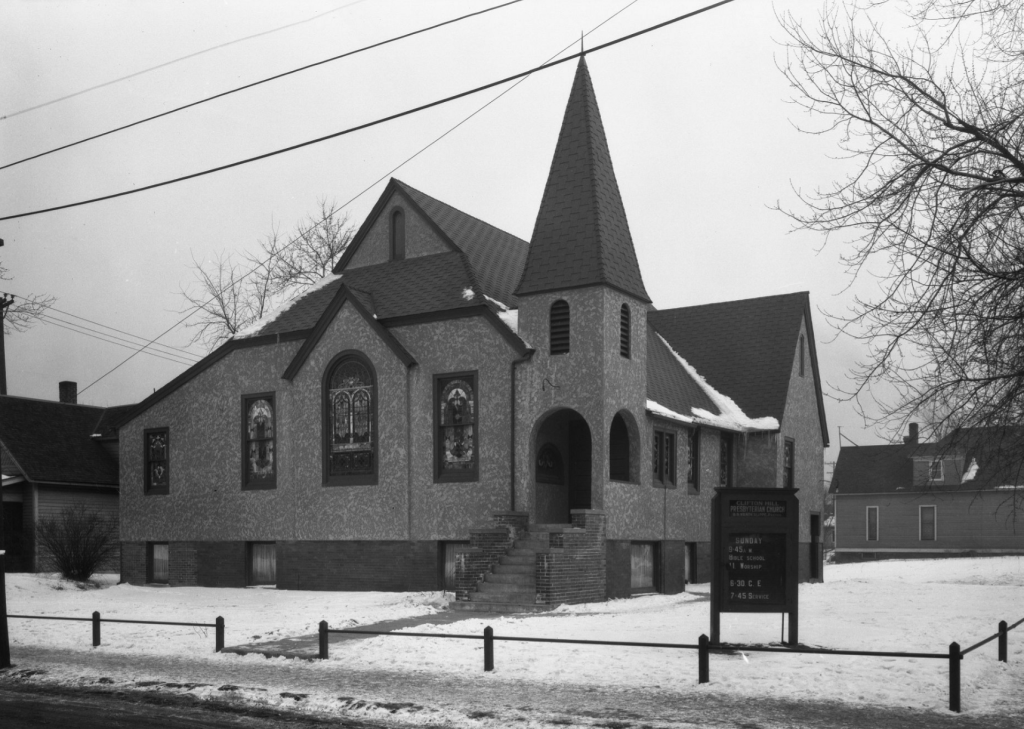
The first businesses opened around this intersection in the 1880s. A small blacksmith’s shop and a dry goods store were originally located there to meet the needs of farmers in the area. As the Clifton Hill neighborhood started developing that year with the Orchard Hill neighborhood to the east, a tavern came to the intersection and brick storefronts started to get built. The first streetcar stabbed up Military Avenue into the intersection in the 1890s.
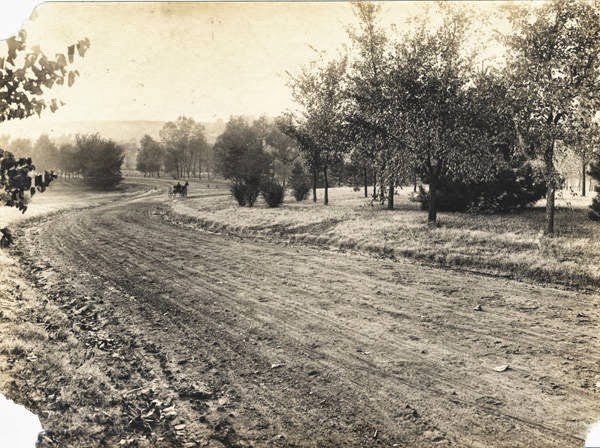
The Fontenelle Boulevard was originally laid out by the City of Omaha in 1892 after they contracted with H.W.W. Cleveland, a nationally known landscape architect whose influence led to the development of the Omaha Parks and Boulevards system. However, paying for it took time and the City didn’t fully prioritize the roadway until 1907, when it was called the Northwest Boulevard in planning sessions.
In 1890, the Bishop Grocery was on Burdette at Military. Meeting there frequently, the improvement association was filled with “Clifton Hillites” who also called for grading and paving of Military Avenue, gas lamps throughout the neighborhood, a postal substation for the neighborhood, and more. In 1904, the newspaper credited the association with successfully advocating for “40,000 square feet of artificial stone sidewalk; 20,000 square feet of brick sidewalk; four and one-third miles of district and main sewers, and thirty-eight street lights.” In 1905, the association declared a “war against scorching on the Military Avenue” because new autos were driving faster than the 12 mile per hour speed limit. The association stayed active, and in the 1920s demanded better streetcar service for the neighborhood.
That same year, in 1890, the owners of the development signed a contract with the streetcar company to extend the Walnut Hill line into their neighborhood along Military Avenue to Grant Street. One hundred houses were built in Clifton Hill in 1890, and the value of the neighborhood’s lots skyrocketed.
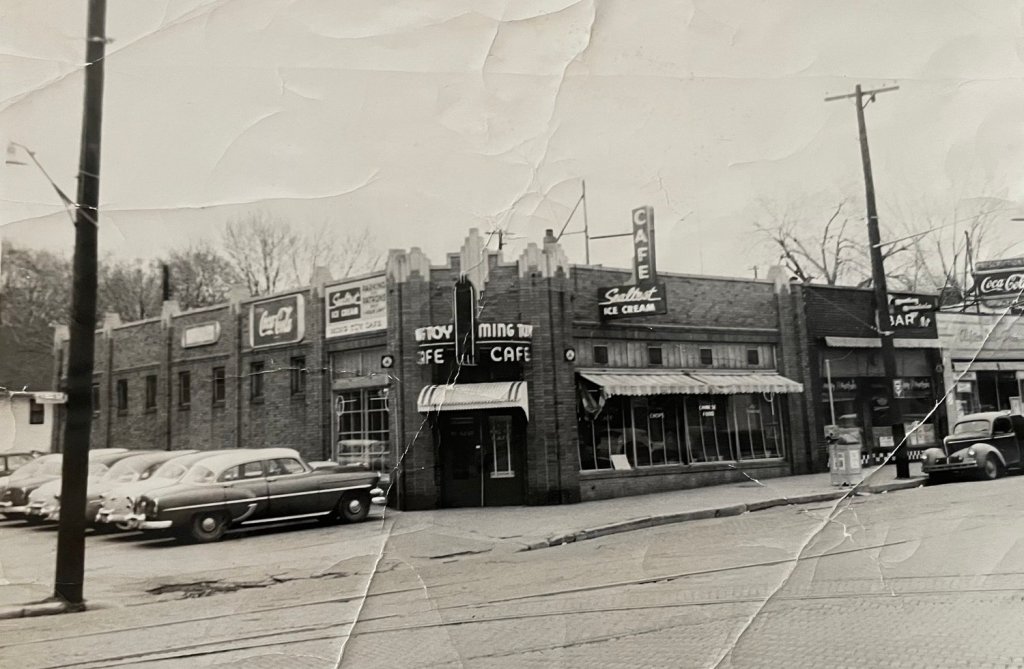
The Clifton Hillites wanted a park for a long time. As early as 1894, they called on the land between Fontenelle Boulevard, North 45th and Military Avenue to become the Clifton Hill Triangle Park. Owned by John A. Creighton still, it was a cow pasture that was undeveloped, filled with beautiful flowing grasses, and speckled with trees. One article said, “Residents casting green eyes at John A. Creighton’s cow pasture,” while another reported “It is sightly, high and so located as to form a park of magnificent views for a public pleasure ground.” Despite a “strong petition” from residents and the support of Creighton, their advocacy failed and the park wasn’t built.
During this timeframe the intersection had a lot of suburban businesses and institutions developing. The Bonde Greenhouse was located there until 1909, when a storm destroyed plants, the glass paneling and metal frame of the building. After meeting in parishioners’ homes for several years, the Clifton Hill Presbyterian Church was built at the intersection in 1891.
By the turn of the 20th century, North 45th and Military had taken off. Small brick commercial buildings lined the intersection on two sides of Military Avenue, including diners, dry cleaners, multiple grocery stores, and more. During this era it became a unique configuration of streets in the city, with North 45th Street, Military Avenue, Grant Street and Fontenelle Boulevard each streaming into it to form an abnormal convergence.
In these early decades real estate agents were taking risks selling property in this area. However, African American attorney Silas Robbins did exactly that more than twice in 1905 and 1906.
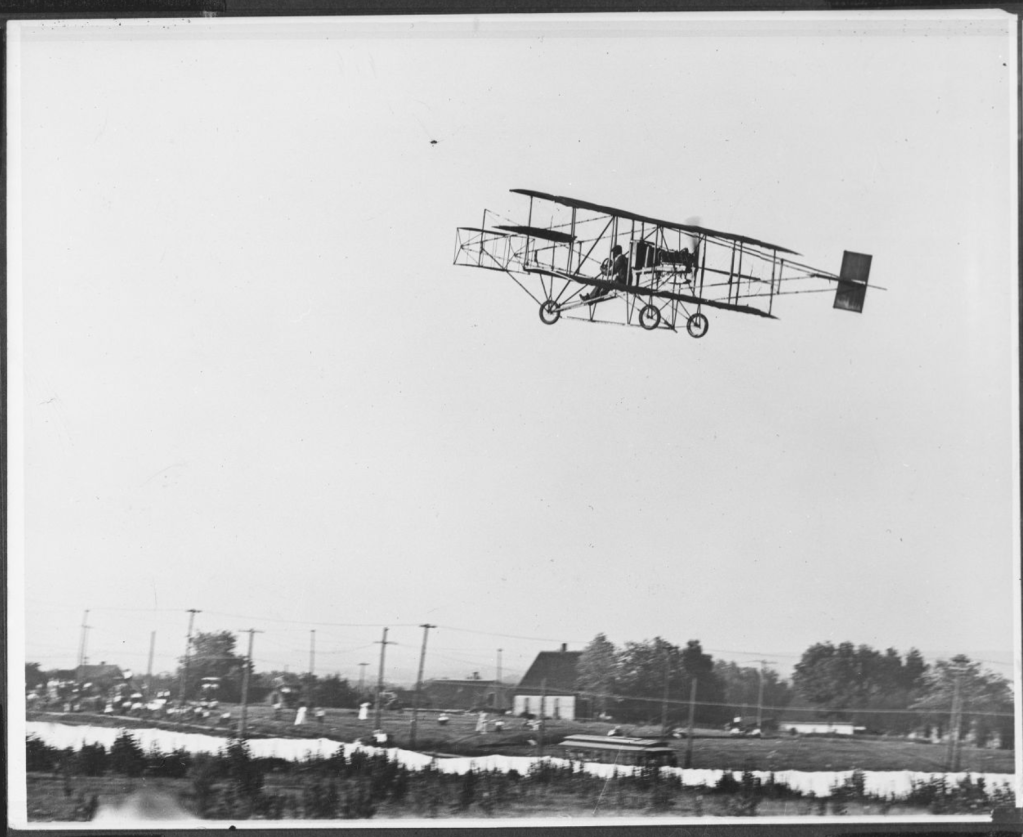
The streetcar company expanded its line from the intersection to the Nebraska School for the Deaf in 1907, causing a run on real estate north of 45th and Military. Soon, houses were being built in every pocket between Clifton Hill and Fontenelle Boulevard. The old Creighton Farm was sold off for housing developments, and several other large property holdings were carved into house lots. Referred to as the “old Creighton cow field,” this land became a lot of houses north of the intersection.
The first airplanes in Omaha took off and landed at this intersection in 1910. That year, a small temporary airstrip was developed at the old Creighton cow field. That year, Glenn Curtiss (1878-1930) himself chose 45th and Military for an “aviation park” to demonstrate the “future of aviation for practical transportation purposes.” Surrounded by a large white tarp, the site included a grandstand and large tents for the airplanes and aviators involved. That July, three airplanes arrived. The first was called “The Hudson Flyer” and was piloted by Curtiss himself. In addition to the planes, there were also two US Army dirigibles, two US Army hot air balloons and a German war balloon used as a stationary viewing opportunity, all arriving from the Fort Omaha Balloon School. Curtiss himself brought the noise, showing off, doing stunts and otherwise proving the commercial viability of airplanes that we still benefit from today.
That same year, 1910, the City Parks Department gave permission for a large amount of dirt to be removed from the bed of the still-developing Fontenelle Boulevard to in-fill ravines around the area that were to be covered with housing lots. The in-fill allowed the lots to be flat and level.
After World War I, the area boomed with a lot of new homes, a new building for Clifton Hill Elementary up the street from the intersection, and a variety of businesses. In 1926, a “new suburban theater” was announced for the intersection. Called the Military Theater for the avenue it was on, it was a grand building with a lot of high tech innovations for its time.
The Standard Oil Service Station at 4465 Military Avenue was built around 1920, but was changed significantly in the 1990s when vinyl siding was added across the whole building. There are many historic features though, including a historic garage opening, a narrow chimney and other features. A new Piggly Wiggly opened near the intersection in 1927.

Over the next 35 years, business at the intersection chugged and churned along as usual. A note from an older reader told me,
“The businesses I remember were a gas station at Decatur Street, Reeds Ice Cream, a barber shop and a Danish bakery sharing a “duplex” brick building, an ice house, a variety store, a record shop, a Safeway grocery, Larsens Auto Repair, Schnaubers Hardware, the Monkey Mountain bar, the Assembly bar, (and one other bar I can’t name just now), Stepanek Cleaners, which was a Chinese restaurant at one time, the Military Theater, and later, the new fire station across the big intersection of Fontenelle Boulevard, 45th Street, and Military Avenue and one other east-west street near Stepaneks that I can’t remember.”
In 1936, a Safeway store opened at 2219 Military Avenue on the southeast corner of Military Avenue and Grant Street. It stayed there until 1943, when it re-opened in a larger building a block south. The Ming Toy Cafe was located at 2219 Military Avenue for several years afterward, staying open in the location until 1961. Before then it was located down Military Avenue starting in 1941.
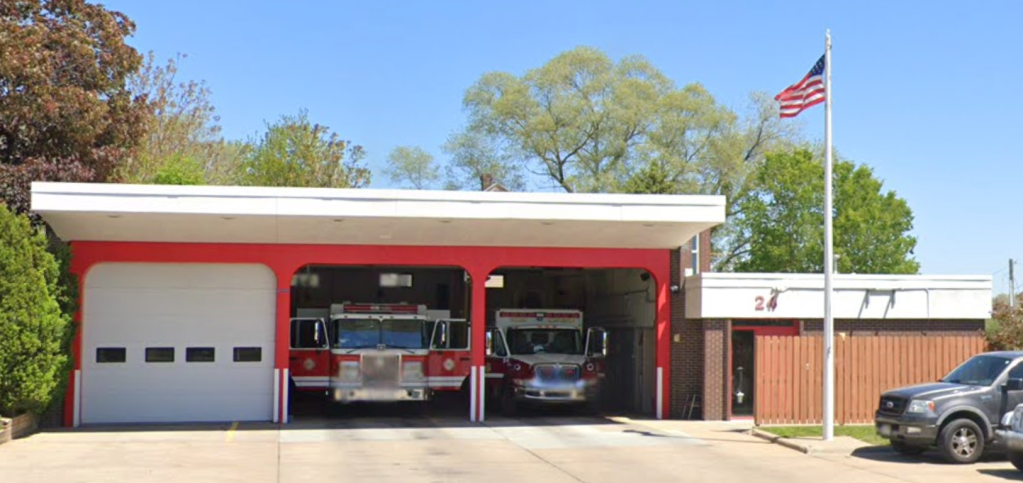
A streetcar served the intersection until 1951. That year, the streetcar was removed and replaced with bus service that continues today. However, that might have been the first death knell for the future of the intersection. In 1957 the Clifton Hill Presbyterian Church tore down their 1890s structure and replaced it. Today the building is home to New Beginning Baptist Church.
A new fire station was built at the intersection in 1966. Replacing an old house, it stands today.
Grace Apostolic Church moved into the old Military Theater in 1992 and has been there for over 30 years since.
Historic District
“No better place for business than on the Military Road in beautiful Clifton Hill.”
—1890 advertisement in the Omaha Bee
In 2022 the Clifton Hill Commercial Historic District was listed on the National Register of Historic Places. Including everything at the intersection of 45th and Military from the Military Theater at 2200 Military Avenue south to 1900 Military Avenue, the district is four acres long with 10 buildings included. All of them were built between 1907 and 1959. The district is noted for its commercial usage on a streetcar line. In addition to the buildings, the granite curbs, and the jogging of the boundaries to exclude residential resources, non-historic commercial buildings, and non-historic vacant lots.
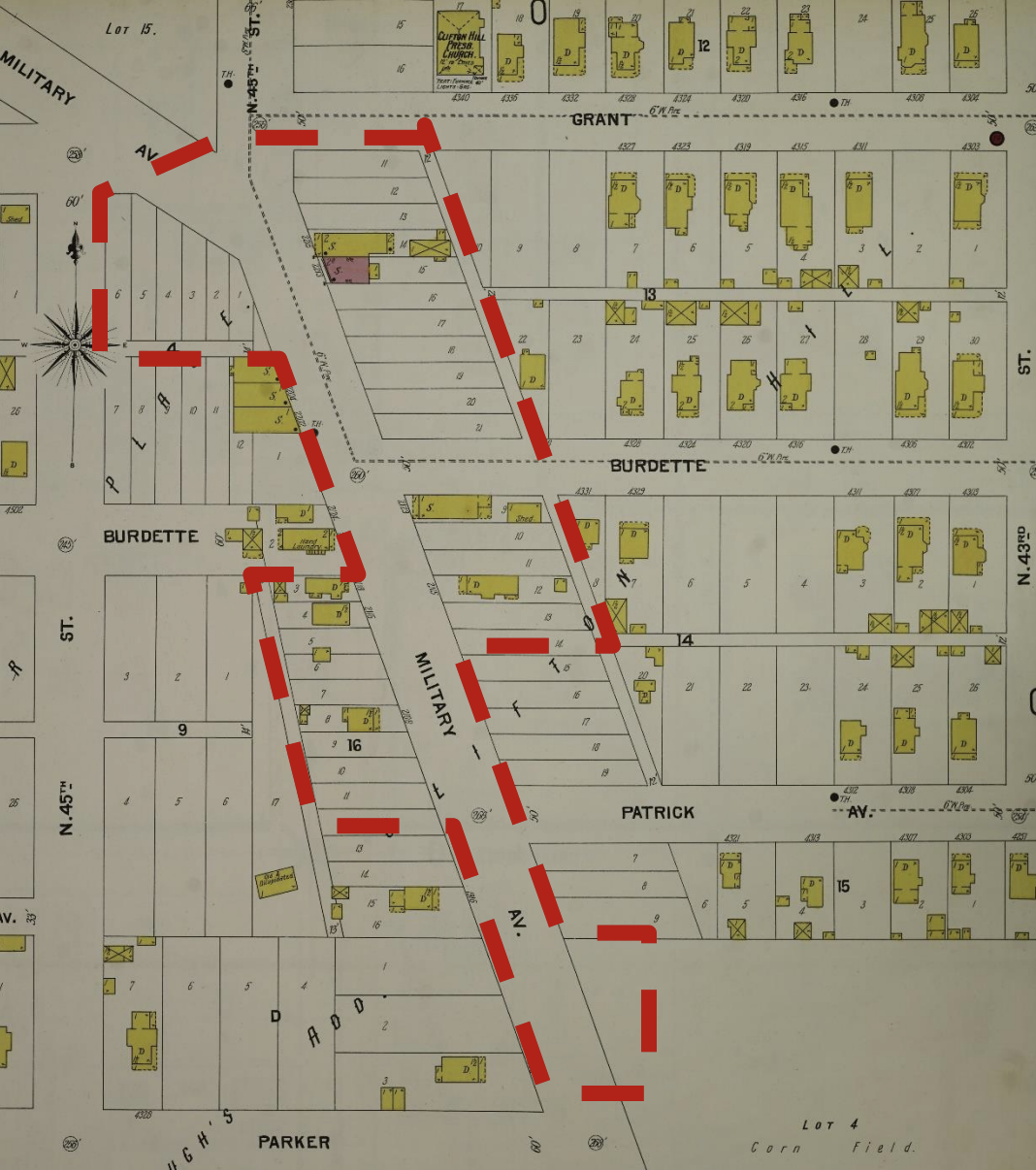
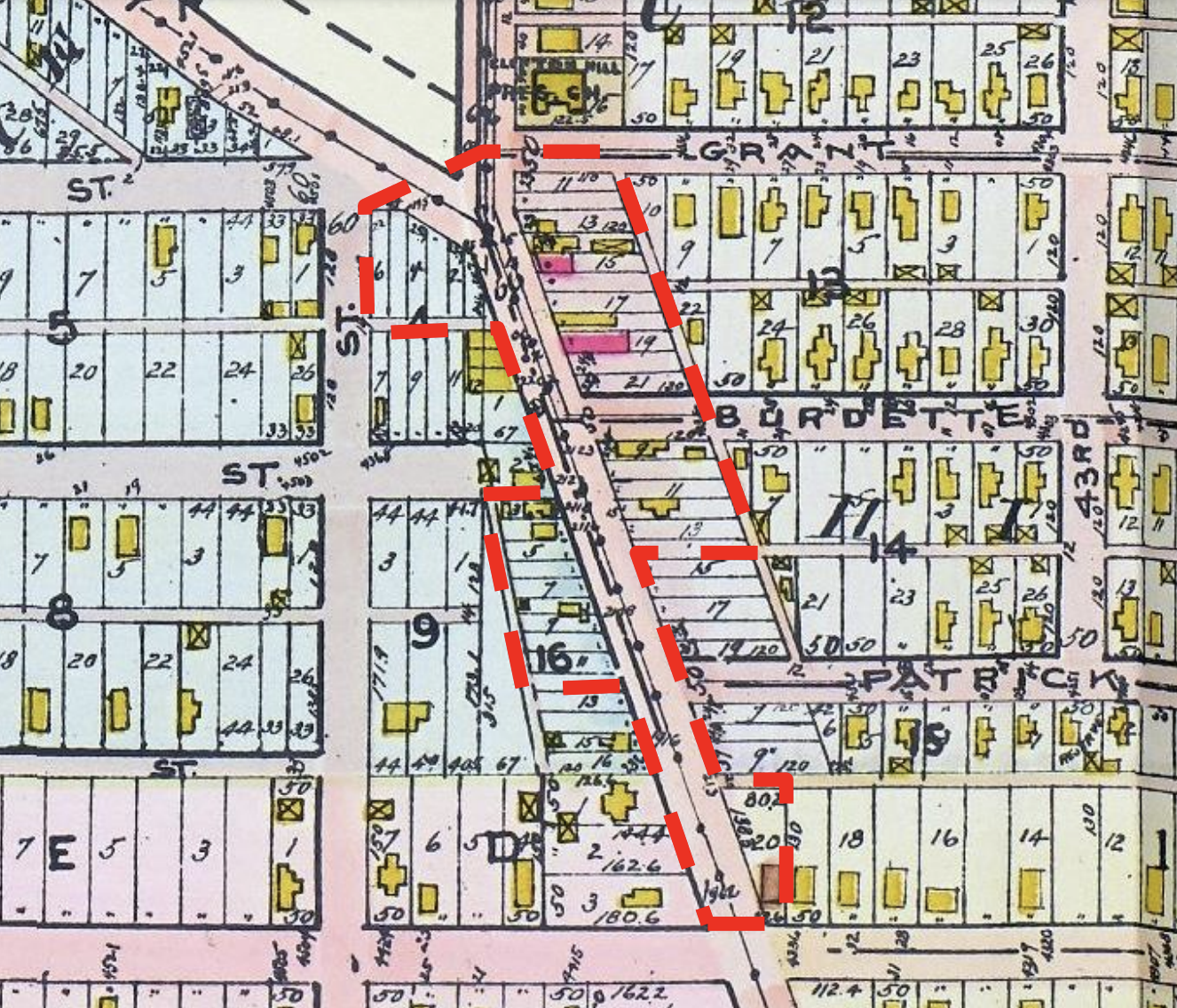
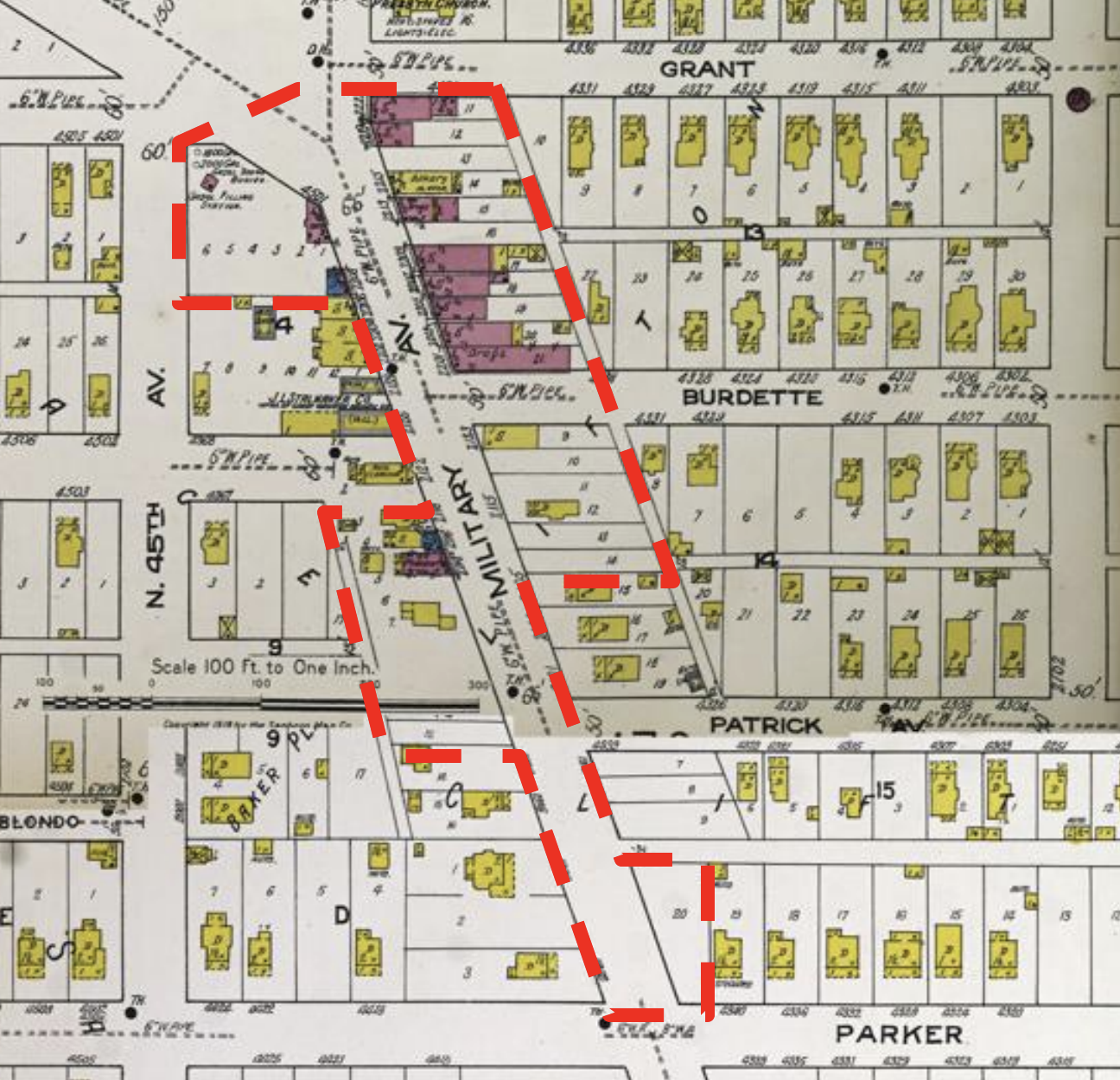
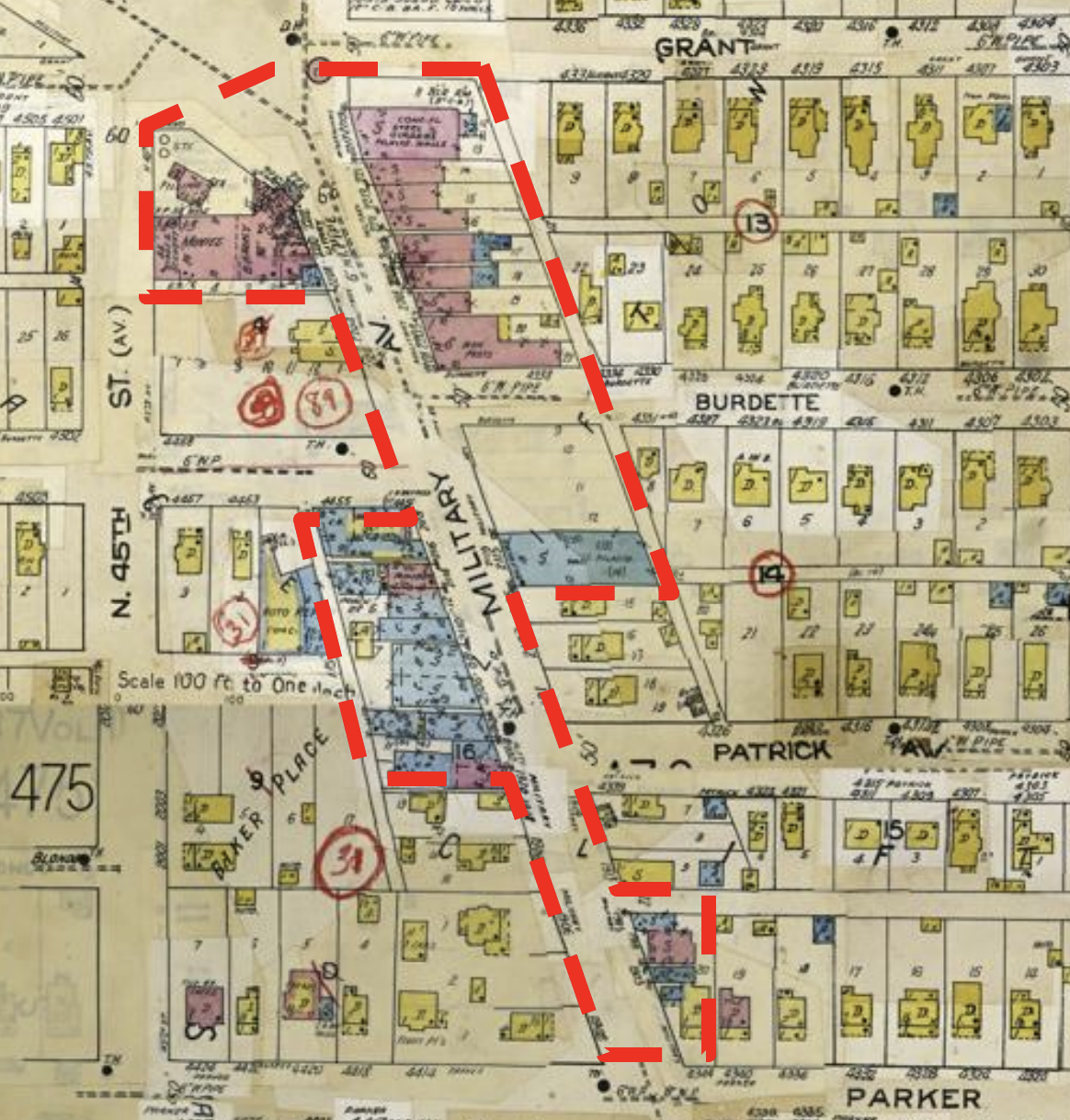
- Louis Zachert Upholstery Shop, 1903 Military Avenue—The store here was built on the house facing Parker Street in 1934.
- Weiss Grocery Store, 1911 Military Avenue—This store was built in 1926 and operated as a store for decades. Its original storefront is intact with windows covered by siding. 1911 1/2 Military Avenue was a dress shop for decades.
- Rasumussen Grocery Store, 1920 Military Avenue—This storefront was built in 1926 and added to in 1948. The storefront entries are covered over today.
- Rydberg Plumbing Company, 2114 Military Avenue—Built in 1918, this two-story brick building was a store for a long time. In 1960 it was added onto significantly.
- Safeway Store, 2115 Military Avenue—Built in 1941, this one-story store was designed in the Moderne style. The covered frontside sits inside its historic design.
- Doctor Office, 2205 Military Avenue—Built in 1905, this storefront is one of the oldest buildings in the district. Its original storefront was changed in the 1950s when the building converted from being a store to professional offices.
- Fischer Bakery, 2207 Military Avenue—Built in 1915, this bakery building is a single story with historic designs on the front still. The garage door on the front is not original.
- Warfield Grocery, 2209 Military Avenue—Built in 1912, there has been a store here since then. It continues to show its typical commercial storefront design today.
- Safeway Store, 2219 Military Avenue—In 1936, a Safeway store opened on the southeast corner of Military Avenue and Grant Street. It stayed there until 1943, when it re-opened in a larger building a block south.
- Military Theater, 2110-2116 Military Avenue—Designed by architect George L. Fischer, the theater opened in 1928. It is in a two-story building with commercial storefronts lining the front and business offices on the second floor. The theater opened with 1,000 seats. The building has Second Spanish Revival style features, with an ornate entryway for the theater itself. Today this theater is home to Grace Apostolic Church, which as been there since 1992.
Today, no historic plaque or other information is available to the public yet.
You Might Like…
MY ARTICLES RELATED TO 45th and MILITARY
Military Road | Military Theater | Clifton Hill | Orchard Hill Neighborhood | Walnut Hill | Fontenelle Boulevard | Nebraska School for the Deaf | Saddle Creek Road | Cuming Street
MY ARTICLES ABOUT THE HISTORY OF STREETS IN NORTH OMAHA
STREETS: 16th Street | 24th Street | Cuming Street | Military Avenue | Saddle Creek Road | Florence Main Street
BOULEVARDS: Florence Boulevard | Fontenelle Boulevard
INTERSECTIONS: 42nd and Redman | 40th and Ames | 40th and Hamilton | 30th and Ames | 24th and Fort | 30th and Fort | 24th and Ames | 24th and Lake | 16th and Locust | 20th and Lake | 45th and Military | 24th and Pratt
STREETCARS: Streetcars | Streetcars in Benson | 26th and Lake Streetcar Barn | 19th and Nicholas Streetcar Barn | Omaha Horse Railway
BRIDGES: Locust Street Viaduct | Nicholas Street Viaduct | Mormon Bridge | Ames Avenue Bridge | Miller Park Bridges
OTHER: North Freeway | Sorenson Parkway | J.J. Pershing Drive | River Drive
Elsewhere Online
- Min Toy Gallery official website
- Clifton Hill Commercial Historic District application from the City of Omaha Landmark Heritage Preservation Commission
BONUS!
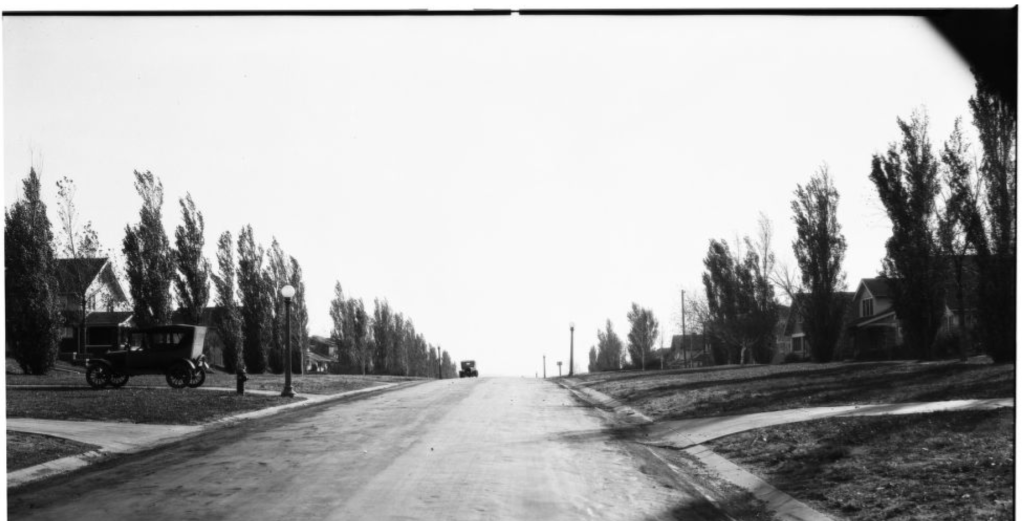
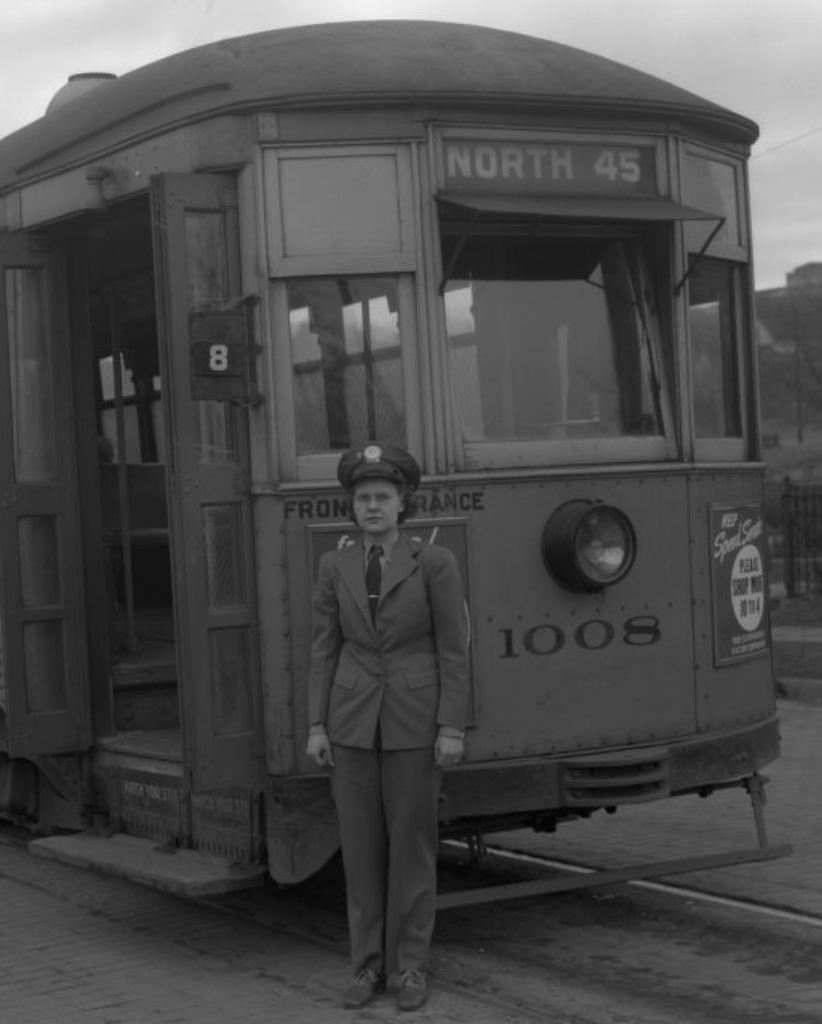

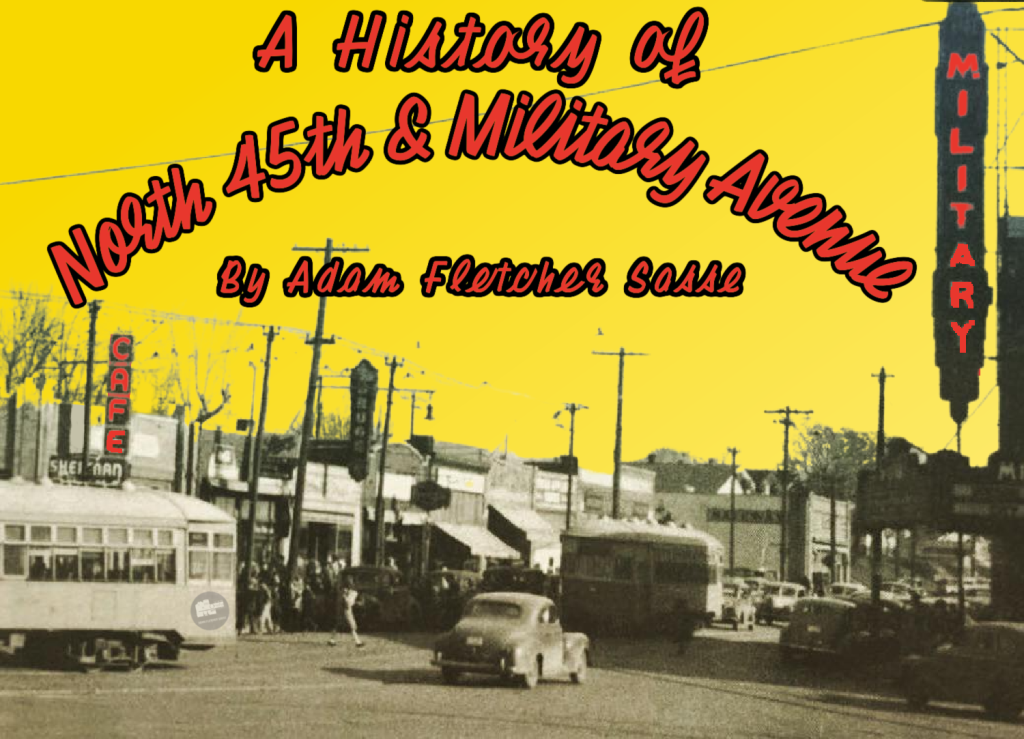
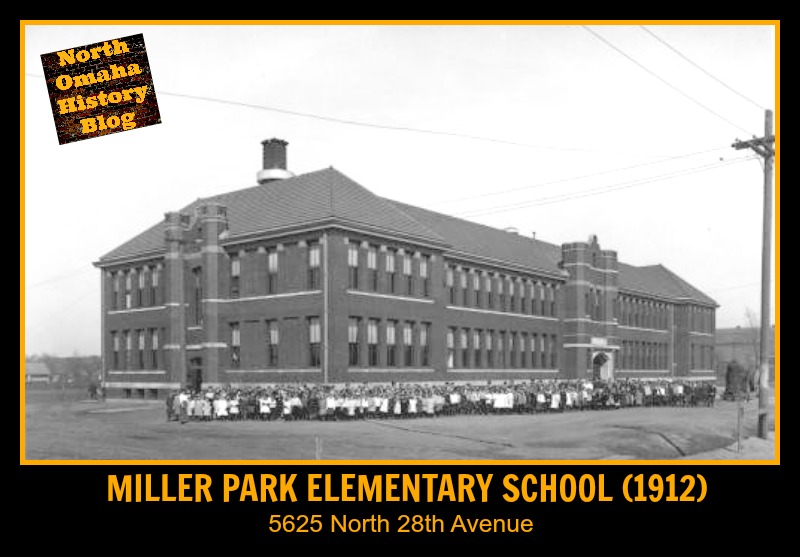



Leave a comment